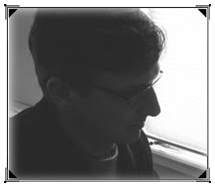This evening I sanitized the Pod and transferred the Chard juice from the pails. The juice was very clear and well-settled, and showed no evidence of fermentation.
I poured from the pails pretty carefully, leaving behind most of the settled lees. The lees smelled and tasted OK, but since I have not handled this juice from the crusher, and am not sure how much reductive or oxidative potential they have, I decided to leave most of them behind.
Fifteen gallons of juice fills the Pod pretty well – I didn't put a tape measure on it but it looks like there is 5"-6" of headspace. We will see later if this is a problem.
Excessively clarified juice does not ferment well – clear juice fermentations frequently make more sulfide and have a greater tendency to stick than turbid juices. Yeast perform better when they have some suspended solids to glom on to.
I have dealt successfully with overly-clarifed juice in the commercial setting by adding back Bentonite, colloidal silica and yeast hulls, singly or together. I decided to keep this ferment simple, so I added just yeast hulls at a rate of 3 lb./1000 gal, 20 grams total.
According to the Brehm website, no SO2 was added at crushing or pressing, so I added 40 ppm, using 7 grams of Efferbaktol granules. Also, the juice tasted a bit flat so I added 0.3 g/L of tartaric acid (17 grams).
At this point the juice read 23.7° Brix – the Pod readings were 24° Brix at 62° F. I turned on temparature control with both setpoints at 65° F.
With everything ready to go, I suspended 17 grams of GoFerm (30 g/hL) in 200 mL of water at 104° F. I rehydrated 17 g of CY3079 yeast for 20 minutes in this suspension befoe pitching it into the juice.
I chose CY3079 because it was selected to perform well in barrel ferments – first and foremost, the fermentation does not foam. This is important, because there is not a lot of headspace in the Pod.
CY3079 doesn't produce much SO2 during fermentation (some yeast do) and is friendlier to malolactic bacteria than some other white wine yeasts. This selection also develops a more pronounced "leesy" character in the wine during aging than nearly any other yeast selection.
The down-side is that CY3079 is prone to sticking, so I plan to feed this fermentation (the Brehm website listing for this juice notes that it is low in available nitrogen – YAN). This yeast also does not produce a "fruity" wine.
So now I wait. I will feed at 20° and 12° Brix, and inoculate for malolactic at dryness. Not much else to do with a white ferment.
Saturday, July 12, 2008
Subscribe to:
Post Comments (Atom)

No comments:
Post a Comment